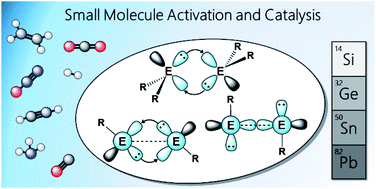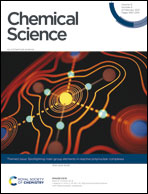Recent advances of group 14 dimetallenes and dimetallynes in bond activation and catalysis
Abstract
Since the first heavy alkene analogues of germanium and tin were isolated in 1976, followed by West's disilene in 1981, the chemistry of stable group 14 dimetallenes and dimetallynes has advanced immensely. Recent developments in this field veered the focus from the isolation of novel bonding motifs to mimicking transition metals in their ability to activate small molecules and perform catalysis. The potential of these homonuclear multiply bonded compounds has been demonstrated numerous times in the activation of H2, NH3, CO2 and other small molecules. Hereby, the strong relationship between structure and reactivity warrants close attention towards rational ligand design. This minireview provides an overview on recent developments in regard to bond activation with group 14 dimetallenes and dimetallynes with the perspective of potential catalytic applications of these compounds.

- This article is part of the themed collections: Materials & Energy in Chemical Science - most popular articles 2021, Spotlighting main group elements in polynuclear complexes and 2020 Chemical Science HOT Article Collection


 Please wait while we load your content...
Please wait while we load your content...